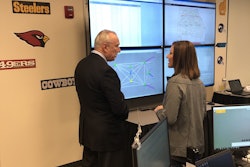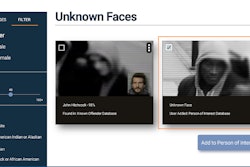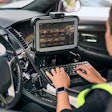It is a particularly challenging time to be a first responder. More frequent and destructive weather events, increasingly regular and deadly mass shootings, coupled with a more sophisticated media environment that fosters both greater public scrutiny and improved situational awareness—all of these factors add complexity to the already difficult task of providing assistance in emergency situations.
Certain requirements have emerged as “table stakes” for the new world of emergency response. Perhaps most notably, command and dispatch centers need instantaneous access to video and the data from sensors and other sources such as social media feeds. This multimedia data can be processed and analyzed to provide better insight into situations on the ground, to more effectively coordinate the efforts of on-site teams, and support more timely decision-making. However, the networks currently available for this purpose may not be ideally suited to address this increasingly important need.
In addition to delivering critical two-way radio communications, public safety agencies have started to use backhaul networks to provide the digital connections needed to transport data from mobile data terminals, closed circuit television (CCTV) feeds, sensors and, increasingly, vehicle-mounted cameras and body cams. Some of these applications are very bandwidth-intensive, and can quickly consume network resources. In emergency situations that involve large crowds (concerts, sporting events, demonstrations, holiday celebrations), network bandwidth bottlenecks can result due to a sudden surge in the number of responders dispatched to a scene. This problem that can be particularly acute when the same backhaul network is being shared with other government agencies.
Similarly, in certain types of emergencies such as hurricanes, floods, and wildfires, there can be an unusually high number of first responders deployed in a given area. Ideally, command centers want to maintain their connections with the expanded teams, to better coordinate their activities and to provide them with heightened situational awareness. However, such events can often cause power outages and/or damage to communications network infrastructure, creating additional barriers to effective communication.
While there are a number of options available to support backhaul requirements, Internet Protocol/Multi-Protocol Label Switching (IP/MPLS) has emerged as a preferred technology choice. IP/MPLS offers a rich collection of network and services capabilities to help ensure high levels of resiliency and reliability needed to maintain this critical lifeline.
IP/MPLS-based mobile backhaul, which is already deployed in many public safety networks worldwide, supports a variety of essential capabilities. For instance, it is compatible with a wide range of communications interfaces, including Ethernet, T1 trunk, and 4-wire analog interfaces. Hence, it is fully interoperable with both analog land mobile radio (LMR) and digital P25 radio systems, as well as with 4G LTE and emerging 5G.
IP/MPLS also supports different types of virtual private network (VPN) services, making it possible to converge all traffic onto a single network while maintaining complete application separation to ensure performance and security. Notably, its ability to continually maintain stringent quality of service (QoS) ensures that radio communications are delivered without performance degradation. As a result, the network can be used to support non-critical city services, while still guaranteeing strict priority for critical public safety traffic. In addition, IP/MPLS services can be encrypted in an end-to-end fashion to safeguard confidentiality, integrity and authenticity of data.
While IP/MPLS offers the capability to prioritize the allocation of network resources to public safety P25 radio systems, as well as other needed systems like CCTV, it may not have the needed level of flexibility to respond to the most rapidly unfolding emergencies and the bandwidth bottlenecks that can result. Fortunately, another networking technology has recently emerged that puts added flexibility in the hands of the operators, known as software defined networking (SDN).
Through an open application programming interface (API), SDN delivers a high level of programmability to the network. In addition, SDN supports service abstraction, making it easy to automate and even orchestrate new network resources and services in response to the shifting situation on the ground. With some up-front programming, the backhaul network can automatically expand the allocation of resources or create a new service as needed without resorting to intensive human intervention (hence the use of the term “programmable backhaul”). More importantly, SDN can be introduced seamlessly into today’s IP/MPLS backhaul networks, protecting existing investments.
Combining IP/MPLS with SDN makes the backhaul network more agile and can improve the effectiveness of emergency response efforts. Take the case of a hurricane, for example. Forecasting technology has made it much easier to anticipate the path of any given storm with a high degree of accuracy. Cities and municipalities in that path need to prepare for a large-scale emergency response. This would typically require that more bandwidth be allocated in the backhaul network to radio communications for first responders along with live CCTV feeds to provide better situational awareness.
Traditionally, operators rely on manual operations through a command line interface (CLI) or network manager (today’s operational paradigm). This paradigm is error-prone and creates stress for operators as they strive to tune the network in a compressed time-frame. However, with SDN, application developers can use the API to write programs proactively that will tune the network as needed to increase bandwidth. This brings heightened situational awareness to emergency personnel as the city strives to keep citizens safe.
This approach can also be applied in fast-evolving situations to enhance response efforts. Envision a situation where a relatively small group gathers in the vicinity of a sports venue (perhaps some fans commiserating after a home team playoff loss), but soon a flash mob dynamic develops. Numbers climb quickly and violence breaks out, ultimately escalating into a riot and spreading to other areas. Public safety agencies suddenly need to ramp up responses rapidly, dispatching more police and other emergency personnel to calm the situation. It would naturally be invaluable for the command center to have access to all live CCTV streams and other surveillance systems in the affected areas for greater situational awareness
With traditional network architectures, this would be very difficult to accomplish. To begin with, the public safety network is operated as a silo, totally isolated from other application systems, and unable to interact seamlessly with those systems. Imagine that an audio sensor or a video analytics gateway detects an unusual event such as shots fired on a street. The analytic application system wants to trigger a live streaming CCTV feed to the command center to provide real-time insight. Unfortunately, the network would not be able to respond automatically to this new connectivity requirement; instead, this scenario requires that a network engineer be on hand at all times, which is not feasible for most public safety organizations.
In contrast, with an SDN API, the public safety network (including backhaul) can be fully integrated with an orchestration platform that can oversee all smart city applications to provide a unified, real-time view of situations on the street. It can also program network resources, through the network API, in a coordinated fashion. When receiving notifications from the analytic system, the orchestration platform can reprogram the backhaul network (e.g. create a new connection or increase allocated bandwidth for CCTV) if conditions warrant.
Essentially, the use of an IP/MPLS network, complemented with SDN technology, will give public safety organizations the flexibility they need to adapt their network to almost any situation, and focus their attention and efforts where they are most needed.
Hansen Chan is senior marketing manager, IP/Optical Networks, for Nokia.













